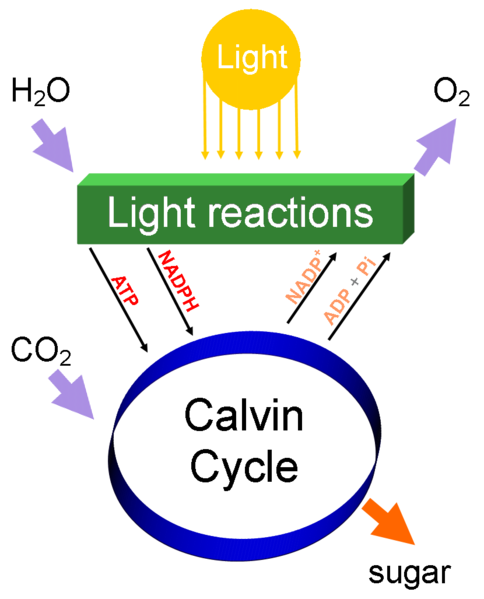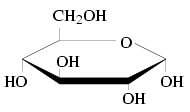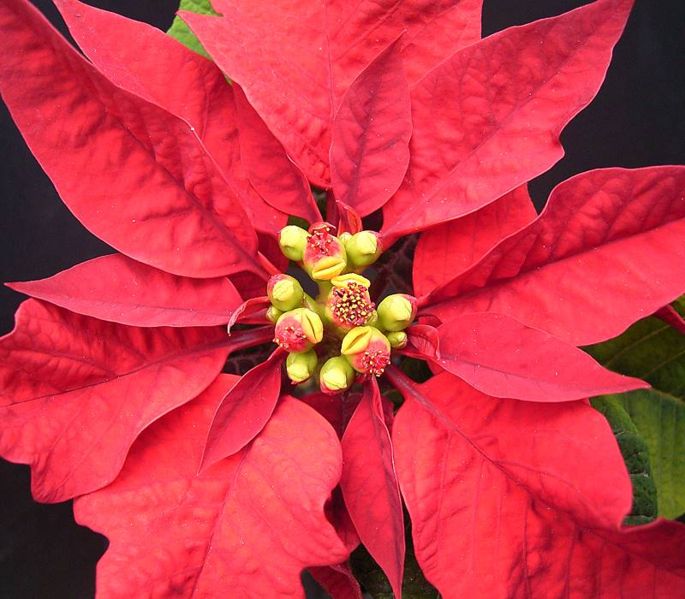Nutrition
Like most other plants,
the poinsettia is autotrophic, meaning it makes its own food.
Through a process called photosynthesis,
the poinsettia combines
energy from sunlight, water, and carbon dioxide to make glucose, a sugar. This
sugar is then broken down by the plant's metabolism, releasing energy that allows the poinsettia to
perform its necessary life
functions. Oxygen is also released as a byproduct of photosynthesis.
The diagram at the right shows where and when
these components enter, are produced, and exit the reaction.
by the plant's metabolism, releasing energy that allows the poinsettia to
perform its necessary life
functions. Oxygen is also released as a byproduct of photosynthesis.
The diagram at the right shows where and when
these components enter, are produced, and exit the reaction.
First water is absorbed by the poinsettia's roots and transported by xylem (vascular tissue that transports water) to the leaves which are the primary site of photosynthesis. The water is then broken down into hydrogen ions (protons), electrons, and oxygen. While the oxygen is released from the stomata (small, controlled openings on the underside of the leaf), the protons and electrons travel through a series of transport chains and concentration gradients releasing energy they gained earlier from sunlight and allowing for the creation of ATP and NADPH (energy storage molecules). These molecules are necessary to run the Calvin Cycle. During the Calvin cycle, carbon dioxide that has entered the plant via the stomata and energy released from the breakdown of ATP and hydrogen ion travel are cycled to create glucose. This glucose is then transported to other areas of the plant that do not perform photosynthesis by phloem (vascular tissue that transports nutrients). The molecular structure of glucose is pictured below.
 Once
it is produced, plants including the poinsettia use glucose in a few
different ways. These may include immediately breaking it down as a source
of energy, storing it as starch to be used as an energy source later, or
bonding many glucose molecules together to make cellulose, the major
component of a plant's cell walls.
Once
it is produced, plants including the poinsettia use glucose in a few
different ways. These may include immediately breaking it down as a source
of energy, storing it as starch to be used as an energy source later, or
bonding many glucose molecules together to make cellulose, the major
component of a plant's cell walls.
Website Created by Christine Vick
March/April 2009
Questions? Comments? Email me at vick.chri@students.uwlax.edu
